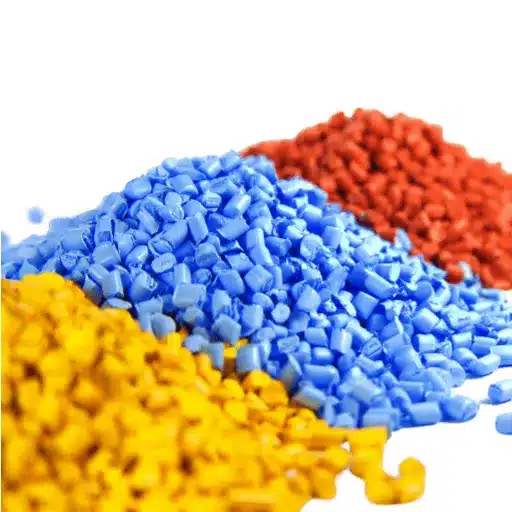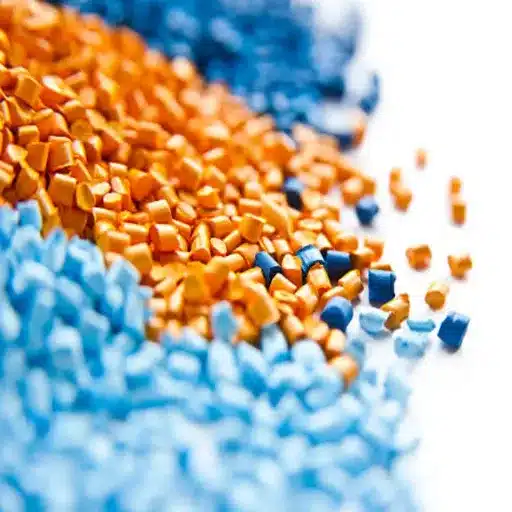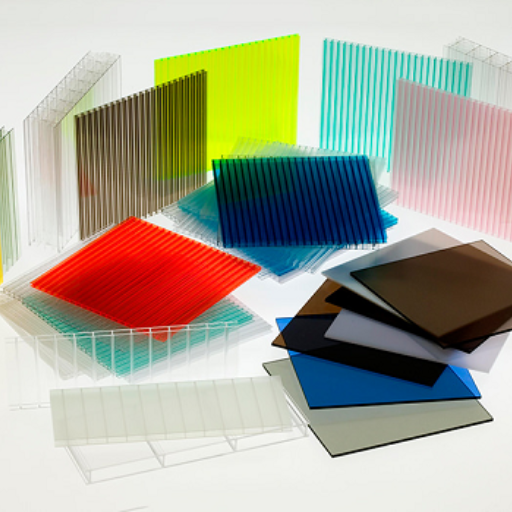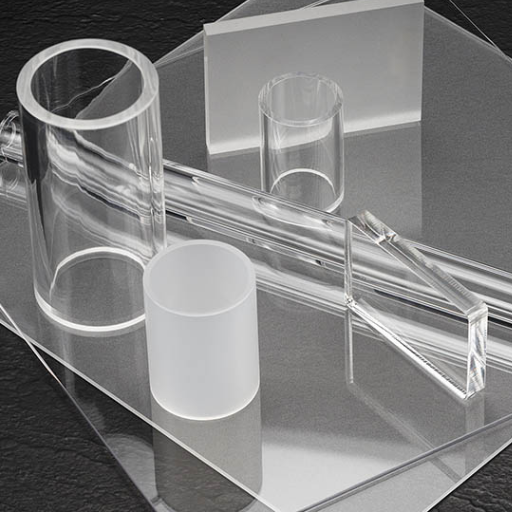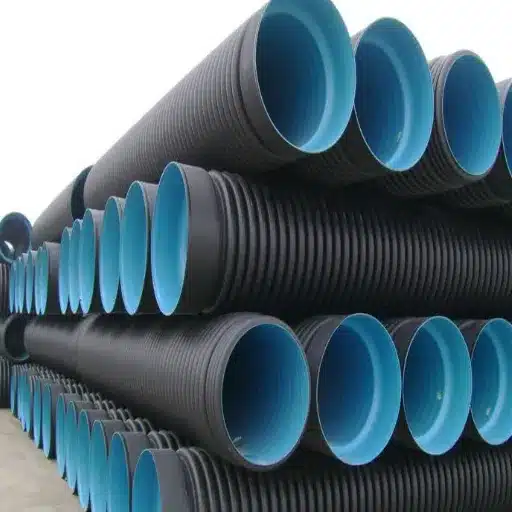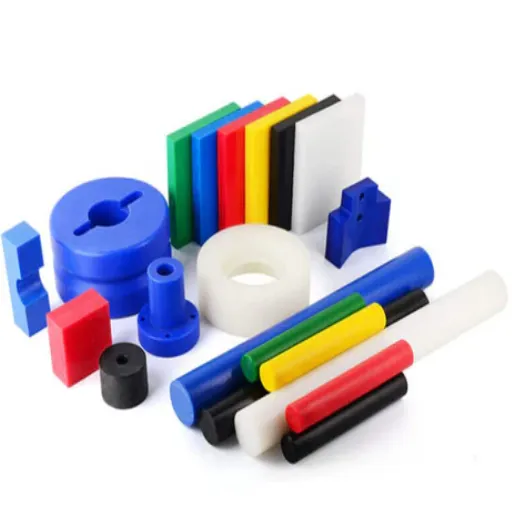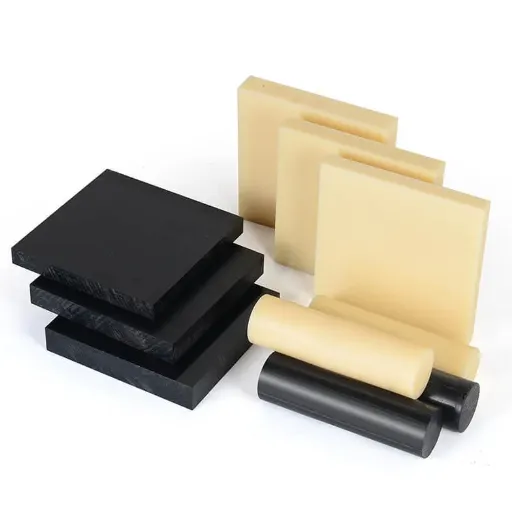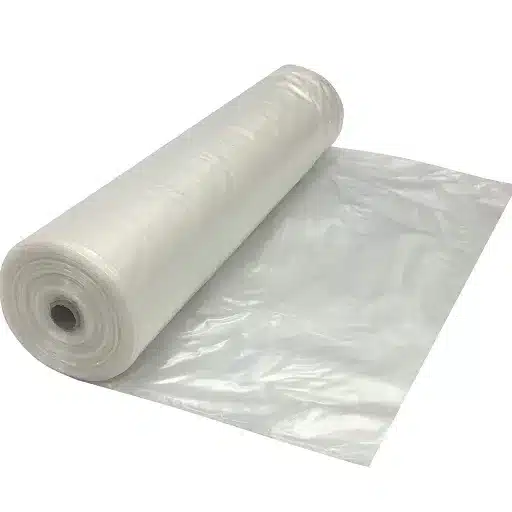High-Density Polyethylene (HDPE) has gained remarkable popularity and become a significant part of modern life. This versatile, durable, and highly adaptable material finds its way into countless products—from packaging solutions to construction applications. But what exactly makes HDPE so exceptional, and why is it the preferred choice across such diverse industries? This comprehensive guide explores the unique properties that distinguish HDPE, its major benefits, and the wide range of applications that demonstrate its tremendous usefulness. Whether you’re a manufacturer, engineer, or environmentally conscious consumer, this article will provide valuable insights into why HDPE is a material worth understanding.
What is High-Density Polyethylene (HDPE)?
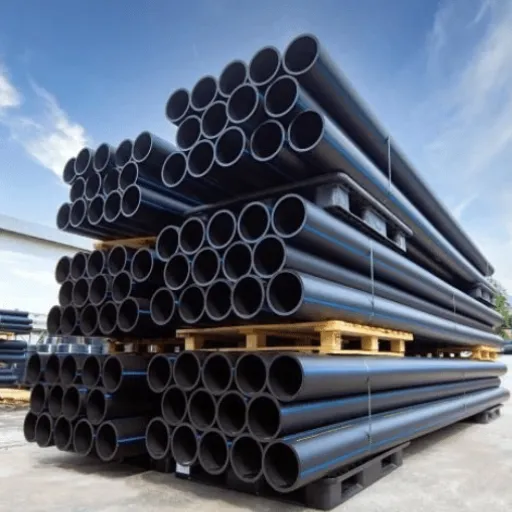
Definition of HDPE
High-Density Polyethylene (HDPE) is a thermoplastic polymer made from petroleum with applications spanning numerous industries. As a member of the polyethylene family—one of the most common plastics worldwide—HDPE distinguishes itself through its exceptionally high strength-to-density ratio. The molecular structure features minimal branching, which contributes to both high density and impressive tensile strength, making it suitable for demanding applications.
Recent industry data from 2023 confirms that HDPE has become a major component in packaging, piping, and construction sectors, thanks to its excellent machinability and chemical resistance. This lightweight yet strong plastic is also recyclable and can be manufactured in many forms, further extending its usefulness across multiple sectors.
Manufacturing Process of HDPE
The manufacturing process of HDPE involves the polymerization of ethylene gas at high temperature and pressure, typically facilitated by a catalyst. Two main production methods dominate the industry:
- Slurry Process: Uses a catalyst to link ethylene molecules into long chains
- Gas-Phase Process: Also employs catalysts to create the characteristic high-density structure
💡 Industry Advancement: Recent reports indicate that progress in catalyst technology has significantly enhanced HDPE manufacturing productivity, resulting in reduced energy consumption and a smaller carbon footprint. Advanced control techniques now enable the production of HDPE with specific characteristics tailored to the unique needs of packaging, healthcare, and automotive industries.
Common Uses of HDPE
High-Density Polyethylene stands out as a material with exceptional versatility, offering durability, affordability, and environmental friendliness across various industries. Key applications include:
Packaging Industry
Plastic bottles and containers for beverages, detergents, and cosmetics
Construction Sector
Pipes for water and gas distribution, valued for strength and corrosion resistance
Automotive Industry
Fuel tanks and safety components, leveraging lightweight yet strong characteristics
Agriculture & Environmental
Geomembranes for landfill liners and agricultural applications due to high impermeability
With increasing emphasis on sustainability and recyclability, HDPE is gaining recognition as a principal material for eco-friendly products such as reusable bags and playground equipment. These diverse applications demonstrate HDPE’s essential role in meeting both modern industrial requirements and environmental considerations.
Material Properties of HDPE
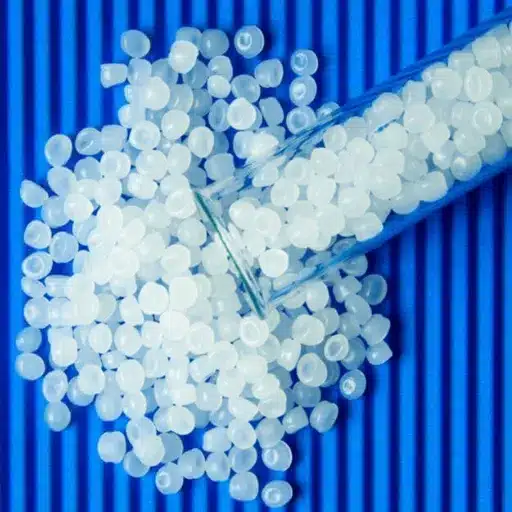
Physical Characteristics
High-Density Polyethylene possesses exceptionally strong and durable physical properties, with a high strength-to-density ratio being one of the primary factors driving its widespread industrial usage.
| Property | Specification | Benefit |
|---|---|---|
| Density | 0.93 to 0.97 g/cm³ | Lightweight yet durable |
| Chemical Resistance | Excellent | Unaffected by acids, bases, and solvents |
| Moisture Absorption | Very Low | Ideal for wet environments |
| Impact Resistance | High (even in cold) | Excellent for outdoor and harsh conditions |
These robust physical characteristics maintain HDPE’s reputation as a versatile and reliable material across numerous industries.
Chemical Resistance
High-density polyethylene stands out as a chemical-resistant material par excellence, making it the top choice for various industrial applications. The resistance levels of HDPE vary depending on chemical composition, but in many cases, acids, alkalis, and organic solvents have virtually no effect on the plastic. This critical property effectively prevents material degradation during frequent chemical exposures common in industrial environments.
Additionally, HDPE demonstrates excellent resistance to highly volatile chemicals, contributing to long service life and eliminating the need for routine maintenance. Industries such as manufacturing, agriculture, and healthcare extensively use HDPE for chemical storage tanks, pipelines, and packaging solutions because of its unmatched chemical stability.
Thermal Properties
HDPE exhibits excellent thermal properties that enable its use in a wide variety of applications. The material’s melting point typically ranges between 120°C and 130°C (248°F to 266°F), allowing it to withstand moderate heat without losing structural integrity. This feature proves especially important in piping systems where thermal resistance is a major factor in system longevity.
⚠️ Important Note: HDPE has low thermal conductivity, making it reliable for insulation in both industrial and residential applications. However, prolonged heating above its melting point will cause the plastic to lose its shape. To achieve optimal thermal performance, HDPE is often enhanced with additives that improve thermal degradation resistance, ensuring reliability even in demanding conditions.
Advantages and Disadvantages of HDPE
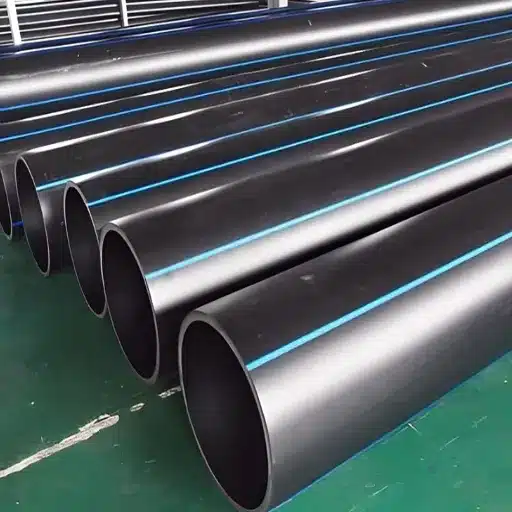
Benefits of HDPE
High-Density Polyethylene offers multiple advantages that explain its widespread use across different industries:
- Exceptional Strength-to-Density Ratio: HDPE is lightweight yet incredibly tough, capable of withstanding significant mechanical stress while remaining easy to handle and transport.
- Outstanding Resistance: Superior resistance to chemicals, moisture, and UV radiation makes it highly suitable for outdoor applications including piping, containers, and geomembranes.
- Remarkable Versatility: Easy to mold into different shapes and forms, enabling manufacturers to produce diverse products from bottles to playground equipment and packaging.
- Safety Profile: Non-toxic and BPA-free, making it a safer choice for food and water storage applications.
- Recyclability: Can be recycled repeatedly, contributing to sustainability by reducing environmental impact and waste.
These characteristics collectively prove that HDPE is a trustworthy and economically viable material in both industrial and consumer sectors.
Disadvantages of HDPE
Despite its numerous advantages, HDPE does have several limitations to consider:
- UV Degradation: Continuous sun exposure can weaken HDPE over time, reducing its lifespan in outdoor applications without proper UV stabilizers.
- Recycling Infrastructure Gaps: While recyclable, not all facilities are equipped with HDPE recycling technologies, leading to disposal challenges and potential contribution to plastic waste.
- Fossil Fuel Dependence: HDPE production still relies on fossil fuels, contributing to carbon emissions and environmental concerns.
- Environmental Persistence: Without efficient recycling processes, HDPE can remain in the environment for hundreds of years, contributing to plastic pollution.
These factors underscore the importance of responsible usage and disposal, along with continued innovation in recycling technology to minimize environmental impact.
Comparative Analysis: HDPE vs. LDPE
High-Density Polyethylene (HDPE) and Low-Density Polyethylene (LDPE) are two of the most prominent polymers, but their distinctly different features determine their use in separate application areas.
| Characteristic | HDPE | LDPE |
|---|---|---|
| Density | High (0.93-0.97 g/cm³) | Low |
| Structure | Rigid and strong | Soft and flexible |
| Common Applications | Pipelines, milk jugs, bulk containers | Plastic bags, squeeze bottles, packaging film |
| Resistance | High impact and chemical resistance | Moderate resistance, more flexible |
| Recyclability | More recyclable | Less recyclable (can clog machinery) |
From an environmental perspective, HDPE’s structural rigidity makes it more recyclable compared to LDPE, which can be challenging to recycle due to its tendency to clog recycling machinery. However, LDPE’s flexibility allows for lightweight applications that may reduce overall material usage when properly managed.
Recent statistics indicate that advancements in recycling technologies are beginning to overcome barriers for both materials, with novel processing methods converting them into reusable forms and improving their environmental sustainability. The choice between HDPE and LDPE depends on specific requirements—strength, flexibility, and long-term environmental impact all play crucial roles. Combined with responsible disposal practices and investment in advanced recycling systems, both materials can significantly reduce their ecological footprint.
HDPE Formulations and Variants
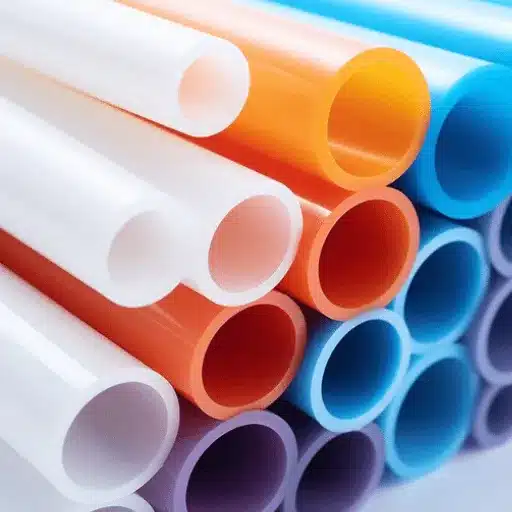
Types of HDPE
High-Density Polyethylene is a multipurpose polymer available in various grades, each optimized for specific industrial and consumer applications:
HDPE Film Grade
Applications: Plastic bags, agricultural films, food containers
Key Features: Excellent tear resistance and flexibility
HDPE Blow Molding Grade
Applications: Bottles, drums, fuel tanks
Key Features: Excellent impact strength and durability for hollow shapes
HDPE Injection Molding Grade
Applications: Crates, caps, containers
Key Features: High stiffness and rapid cycle times for rigid items
HDPE Pipe Grade
Applications: Water and gas pipes
Key Features: High stress-crack resistance, reliability in critical infrastructure
HDPE Sheet Grade
Applications: Industrial and construction uses
Key Features: Exceptional chemical resistance and versatility
Ongoing technological advancements continue to highlight HDPE’s versatility. Based on recent data, innovations in recyclable and biodegradable HDPE formulations are expected to emerge, emphasizing HDPE’s trailblazing role in developing eco-friendly solutions while maintaining its toughness and flexibility.
Customization of HDPE Formulations
Tailored HDPE formulations are key to allowing manufacturers to modify the material’s properties according to specific industry and market needs. By adjusting molecular weight, branching structure, and additives, manufacturers can achieve specific characteristics such as enhanced strength, improved flexibility, or greater resistance to environmental stress cracking.
🔬 Recent Innovations: Recent developments include UV-resistant additives for outdoor usage and antimicrobial formulations for healthcare applications. Additionally, incorporating recycled materials into HDPE blends has become common practice, promoting a circular economy. This adaptability positions HDPE as a highly versatile material capable of addressing the demands of diverse industries while supporting sustainability goals.
Applications of Specialized HDPE Sheets
Durability, versatility, and resistance to various environmental conditions make specialized HDPE sheets popular across a range of industries:
Construction Sector
Primary material for protective barriers, geomembranes, and pipe linings thanks to durability and chemical resistance.
Agriculture Sector
Provides dependable water storage tanks, irrigation systems, and greenhouse lining solutions.
Healthcare Sector
Specialized sheets with antimicrobial properties maintain sterility in equipment, laboratories, and cleanrooms.
Food and Beverage Industry
Non-toxic, FDA-compliant sheets used for cutting boards, food storage containers, and work surfaces.
Consumer Goods & Packaging
Recycled content supports eco-friendly industrial designs and sustainable packaging materials.
Renewable Energy Projects
Utilized in solar panel frames and wind turbine components due to lightweight and weather-resistant properties.
Innovations such as enhanced UV protection for prolonged outdoor use have made HDPE sheets integral to outdoor furniture, playgrounds, and protective coverings, all while ensuring minimal environmental impact and lasting quality. Data shows an increasing demand for HDPE in renewable energy projects, indicating the material’s capacity to adapt and meet modern challenges while supporting sustainable industries.
Environmental Impact of HDPE

Sustainability of HDPE
The sustainability of HDPE comes from its long life, recyclability, and multifunctionality, which makes it an indispensable material for various industries that are attempting to lessen their environmental footprints. The most recent information from ‘s search engine indicates that there has been a significant rise in calls for recyclable materials, which means that the world is over-emphasizing eco-friendly solutions. HDPE is the highest of all recyclable polymers and can be recycled innumerably without alteration of its characteristic properties. This attribute plays a dual role in that it not only sends less waste to landfills and easy up the supply of virgin materials but also saves energy and lessens the amount of carbon dioxide released during the extraction and production of raw materials. Besides, the use of HDPE in industrial innovations and its incorporation in eco-friendly practices like closed-loop recycling systems is a clear indication that the material is capable of being regarded as a circular economy ally. All these factors together stress that HDPE is a great material for environmentally friendly development and that it can be a large-scale solution to the increasing need for such materials.
Recycling and Reusability
At the heart of environmental waste reduction and circular economy is recycling and reusability. Almost universally, high-density polyethylene (HDPE) is among the most recycled plastics mainly because it is tough and can be molded into different shapes. The latest numbers show that interest in the term “HDPE recycling” saw a rise of more than 20% last year, which is indicative of the increasing public consciousness about sustainable practices. The polymer can be recycled until its quality ceases to remain good, thus making it suitable for a closed-loop recycling system. The recycled HDPE is usually made into things like pipes, plastic lumber, or new containers, which is a testimony of its application in different industries. Therefore, the existing focus on recycling leads not only to a reduction in the usage of virgin materials but also to a corresponding shrinkage in the environmental impact resulting from production and disposal.
Future of HDPE in Sustainable Practices
The future of HDPE (High-Density Polyethylene) in ecological practices is very much alive as the industry keeps on innovating and using every kind of eco-friendly methods. Data from searches and similar sources shows that a global trend for more recycled HDPE products is on the rise. Businesses are backing today’s advanced recycling methods, for instance, chemical recycling, which can convert HDPE to its original monomers, thus allowing for endless reuse of the quality without any loss. Moreover, stricter, more basically fabulous regulations are being placed on businesses and the like, while the opposite is the case where they are being given financial grants to switch to sustainable sources of supply, thus promoting a circular economy for HDPE.
In addition, the process of incorporating HDPE with renewables and decomposition-prone materials is going on to boost its eco-friendliness. Such innovations may be the answer to the reduction of the environmental impact of the plastic production process while at the same time satisfying the demand for plastic materials that are strong and flexible. The place of HDPE in the context of sustainable development is that it does not only show its versatility but also makes it hard for the planet to turn a blind eye to the problem of plastic waste.
FAQ
What is the good and bad of using HDPE material?
Among many other benefits, the HDPE material is characterized by a high strength-to-weight ratio and it is also able to withstand the damage from impacts and chemicals. It is a widely accepted plastic material and has the ability to tile in a variety of areas, for instance, it is the main material for making orthotic and prosthetic devices and in packaging food and beverage containers, milk bottles, etc. But on the other hand, the UV radiation that HDPE is subjected to poses a problem since it is light-sensitive, and can cause its gradual degradation over time. Though HDPE is recyclable, the recycling process can be intricate and some recycling facilities do not accept HDPE products. Being aware of the property’s pros and cons might help both consumers and manufacturers to come up with their decision.
What is the common method of recycling HDPE plastic?
HDPE is easily recyclable, and the demand for it in different markets is quite strong, hence, it is often recycled. The procedure involves gathering the HDPE products, purifying them to get rid of the impurities, and chopping them into tiny flakes. The flakes are fused and remoulded into new products, which might be anything from recycled HDPE plastic sheets and new containers to new product applications. It is a fact that HDPE does not lose its physical properties post-recycling, hence, it becomes a safe option for manufacturers. However, the HDPE must be sorted and cleaned in a proper manner to prepare a quality recycled material. Products containing recycled materials are available in the market. You might want to purchase those that have the recycling symbol for HDPE.
What are the key physical properties of HDPE?
Among the physical properties of HDPE is its high density which is more than that of low-density polyethylene (LDPE), and the strong intermolecular forces and high tensile strength. These properties give HDPE a long life and thus it can be used in hard applications. HDPE is usually highly crystalline, meaning it has a stiffer and, thus, a heat resistant structure. Depending on the application, the molecular weight of polyethylene may be dictated as it impacts the flexibility and strength of the material. Knowing the physical properties is a big help in choosing the right HDPE grade for the specific application.
What are the most common applications of HDPE plastic?
The usage of HDPE plastic covers a broad range of areas because of its remarkable flexibility and long lasting nature. Among others, containers for household items like bleach, detergent, etc., and food storage solutions are the most common uses. The substance is also frequently employed in the manufacture of pipes, geomembranes for environmental protection, and plastic lumber. The excellent performance in outdoor applications is due to the high temperature and impact resistance nature of HDPE. Moreover, the use of HDPE can be found in the construction, automotive, and medical sectors.
How do HDPE formulations alter its applications?
The inorganic formulations can radically alter the properties of the material and its applications. Different formulations may result in differences in toughness, flexibility, and performance. The molecular weight and the addition of additives can help to obtain specific features of HDPE making it available for a variety of applications. For instance, there are some HDPE formulations which are built to enhance UV stability while others are intended to get high tensile strength. This adaptability allows the manufacturers to customize the HDPE for a particular application, ensuring that the performance is maximized in areas ranging from packaging to industrial environments.
How does high-density polyethylene affect the plastic industry?
HDPE is rather an important polymer to the plastic industry considering its properties and marketability. A polymer that boasts of being the strongest of all breeds, HDPE is sought-after due to its long life. It is also the main reason behind the immense popularity of the product in the chemical and environmental stress industries packaging, construction, and automotive, etc. the production of HDPE is often environmentally friendly than other plastic materials; it can be recycled and reused effectively. The significance of HDPE is further underscored by its contributions to the sustainable practices within the industry.
Reference Sources
-
Harvard ADS (Astrophysics Data System): A detailed abstract discussing high-density polyethylene (HDPE) as a key member of the polyolefin family and its importance in polymer applications.
Polyethylene: High-Density – ADS -
South Dakota State University: A thesis on the potential of high-density polyethylene as an additive manufacturing material, focusing on its economic and environmental benefits.
Additive Manufacturing with High-Density Polyethylene -
OhioLINK Electronic Theses and Dissertations Center: A comprehensive study on the industrial applications and properties of high-density polyethylene.
High-Density Polyethylene – OhioLINK







